Análisis del XMG Neo 16 (Early 24): Toda la potencia de la RTX 4090 en un portátil de juegos compacto

Con el Neo 16, Schenker atiende al segmento de gama alta y, en consecuencia, no hay medias tintas: Core i9, GeForce RTX 4090 y 32 GB de RAM equipan al portátil para escenarios de aplicaciones exigentes (streaming, renderizado, juegos). Pero, esto tiene un coste: Tendrá que desembolsar unos 4.000 dólares (tipo de cambio actual dólar/euro) por el modelo de revisión, aunque también se pueden conseguir variantes más baratas a partir de 2.000 dólares. La base la proporciona el barebone Tongfang (GM6IX9B). Los competidores vienen en forma de, por ejemplo, el Razer Blade 16el Medion Erazer Beast X40 y el Asus ROG Strix Scar 17.
El dispositivo es similar al modelo 2023 pero presenta algunas novedades: Una pantalla más brillante, un sistema de refrigeración revisado y un mayor ángulo de apertura. El teclado mecánico (opcional) que se encontraba en el predecesor no forma parte de la oferta del modelo 2024.
Posibles contendientes en la comparación
Valoración | Versión | Fecha | Modelo | Peso | Altura | Tamaño | Resolución | Precio |
|---|---|---|---|---|---|---|---|---|
| 85.5 % | v8 | 06/2024 | SCHENKER XMG Neo 16 (Early 24) i9-14900HX, NVIDIA GeForce RTX 4090 Laptop GPU | 2.5 kg | 26.6 mm | 16.00" | 2560x1600 | |
| 91.1 % v7 (old) | v7 (old) | 02/2024 | Razer Blade 16 2024, RTX 4090 i9-14900HX, NVIDIA GeForce RTX 4090 Laptop GPU | 2.5 kg | 22 mm | 16.00" | 2560x1600 | |
| 89.2 % v7 (old) | v7 (old) | 02/2024 | Medion Erazer Beast X40 2024 i9-14900HX, NVIDIA GeForce RTX 4090 Laptop GPU | 2.9 kg | 36 mm | 17.00" | 2560x1600 | |
| 87.2 % v7 (old) | v7 (old) | 08/2023 | Asus ROG Strix Scar 17 G733PYV-LL053X R9 7945HX3D, NVIDIA GeForce RTX 4090 Laptop GPU | 2.9 kg | 28.3 mm | 17.30" | 2560x1440 |
Carcasa - El portátil XMG tiene un chasis de aluminio
El chasis del modelo 2023 no se utiliza en el actual modelo Neo. La nueva cubierta tiene más en común con la carcasa vista en los últimos portátiles XMG: un paso en la dirección correcta: En lugar de una mezcla de plástico y metal, el fabricante ha optado por una carcasa hecha completamente de metal (Excepción: los biseles de la pantalla son de plástico). El chasis es tan estable como cabría esperar. La unidad base y la tapa sólo pueden torcerse ligeramente. La tapa permite un ángulo de apertura de hasta 180 grados (modelo 2023: 135 grados). Esto facilita la visualización del contenido cuando hay varias personas presentes. Las bisagras herméticas mantienen la tapa en su sitio y en casi cualquier ángulo. Es posible abrir el dispositivo con una sola mano.
Los elementos de diseño llamativos no se ven por ninguna parte, lo que significa que el ordenador negro mate corta una figura bastante seria. Además de las teclas retroiluminadas (RGB), una tira de LED definida por el usuario y personalizable individualmente proporciona un alivio luminoso de colores.
Top 10 Análisis
» Top 10 Portátiles Multimedia
» Top 10 Portátiles de Juego
» Top 10 Portátiles de Juego ligeros
» Top 10 Portátiles Asequibles de Oficina/Empresa
» Top 10 Portátiles de Juego Ligeros
» Top 10 Portátiles de Oficina/Empresa Premium
» Top 10 Estaciones de Trabajo
» Top 10 Subportátiles
» Top 10 Ultrabooks
» Top 10 Convertibles
» Top 10 Tablets
» Top 10 Tablets Windows
» Top 10 Tablets de menos de 250 Euros
» Top 10 Phablets (>5.5")
» Top 10 Smartphones
» Top 10 Smartphones (≤5")
» Top 10 Smartphones de menos de 300 Euros
» Top 10 Smartphones de menos de 120 Euros
» Top 10 Portátiles de menos de 1000 Euros
» Top 10 Portátiles de menos de 500 Euros
» Top 10 Portátiles de menos de 300 Euros
» Los Mejores Displays de Portátiles Analizados por Notebookcheck
El último Neo 16 parece algo más compacto que el predecesor, pero, en cuanto a su peso, los portátiles no se pueden diferenciar. Sólo el Blade 16 ofrece más compacidad - y con un peso casi idéntico.
Características - USB 4 a bordo
Cuatro de los cinco puertos USB del Neo 16 (3x USB-A, 2x USB-C) funcionan según el estándar USB 3.2 Gen 1. Sólo el puerto USB-C de la parte trasera aporta Thunderbolt 4 (USB 4), que incluye compatibilidad con Power Delivery y el modo Display Alt. Dispone de un total de dos salidas de vídeo (1x HDMI, 1x DP). Una toma de audio y un puerto Gigabit Ethernet (2,5 GBit/s) completan la oferta.
La distancia entre los puertos USB (lado derecho: 12 mm, lado izquierdo: 8 mm) parece adecuadamente proporcionada: Se pueden enchufar al mismo tiempo dos memorias (conectores) de tamaño típico (ver imágenes de la galería). Las salidas de vídeo y los conectores de alimentación se encuentran en la parte trasera del aparato. Los cables asociados irían hacia la parte trasera y, por tanto, no estorbarían.
Lector de tarjetas SD
El lector de tarjetas SD (referencia: AV PRO microSD 128 GB V60) es uno de los modelos medianamente rápidos: Las velocidades de transferencia de 76 MB/s (transferencia de 250 imágenes jpg, 5 MB por archivo) y 87 MB/s (copia de grandes bloques de datos) pueden calificarse de aceptables. El Razer Blade 16 demuestra que es posible alcanzar cifras significativamente superiores.
| SD Card Reader | |
| average JPG Copy Test (av. of 3 runs) | |
| Razer Blade 16 2024, RTX 4090 | |
| Media de la clase Gaming (19 - 204, n=67, últimos 2 años) | |
| Medion Erazer Beast X40 2024 (AV PRO microSD 128 GB V60) | |
| SCHENKER XMG Neo 16 (Early 24) (AV PRO microSD 128 GB V60) | |
| SCHENKER XMG Neo 16 E23 (AV PRO microSD 128 GB V60) | |
| maximum AS SSD Seq Read Test (1GB) | |
| Razer Blade 16 2024, RTX 4090 | |
| Media de la clase Gaming (25.8 - 261, n=66, últimos 2 años) | |
| Medion Erazer Beast X40 2024 (AV PRO microSD 128 GB V60) | |
| SCHENKER XMG Neo 16 (Early 24) (AV PRO microSD 128 GB V60) | |
| SCHENKER XMG Neo 16 E23 (AV PRO microSD 128 GB V60) | |
Comunicación
En condiciones óptimas (sin dispositivos Wi-Fi cerca, corta distancia entre el portátil y el PC servidor) se pueden alcanzar velocidades de datos de buenas a excelentes; un chip WiFi 6E (Intel AX211) lo hace posible. Las conexiones por cable las realiza un controlador Gigabit Ethernet de Realtek (RTL8125, 2,5 GBit/s).
Cámara web
La cámara web (2,1 MP) ofrece una calidad media y es compatible con Windows Hello. Además de eso, hay un obturador mecánico.

Accesorios
El portátil viene con una memoria USB (controladores, instrucciones), pegatinas y una alfombrilla de ratón. Un accesorio opcional viene en forma de refrigeración externa por agua https://www.xmg.gg/xmg-oasis-mk2/ ($230).
Mantenimiento
Tras retirar todos los tornillos de la base del aparato, se puede separar la cubierta de la base con la ayuda de una púa o una espátula plana. Esto le da acceso a los bancos de RAM (ambos están ocupados), los ventiladores y la batería. El SSD y las ranuras SSD (PCIe 4, M.2 2280) y el módulo Wi-Fi están cubiertos por placas adicionales atornilladas.
Garantía
En la UE, Schenker ofrece una garantía básica de dos años que incluye un servicio de recogida y un servicio de reparación rápida de 6 meses (reparaciones en 48 horas). Una garantía de 36 meses le costará entre unos 100 y 160 dólares - dependiendo del periodo de reparación rápida seleccionado.
Dispositivos de entrada - Un teclado con iluminación individual de las teclas
Teclado
Anteriormente se podía pedir el Neo 16 del año pasado con un teclado mecánico opcional, pero el modelo actual sólo tiene un teclado chiclet. El teclado cubre toda la anchura del portátil y también incorpora un teclado numérico e iluminación individual de las teclas (RGB). Las teclas cóncavas y curvadas ofrecen un recorrido medio, un punto de presión bien definido y una resistencia muy agradable. El teclado no se flexiona al escribir. Lo que sí llama la atención es lo cómodas que resultan de utilizar las teclas de flecha descentradas y de tamaño normal, una mejora respecto al modelo del año pasado.
Panel táctil
Pantalla - Schenker ha optado por un brillante panel IPS
A la pantalla instalada de 16 pulgadas (2.560 x 1.600 píxeles) no le falta nada en cuanto a brillo (~ 500 cd/m²), pero el contraste (1.000:1) podría ser mayor. En lo que respecta a esta área, el Blade 16 El panel OLED ofrece un mejor conjunto global: gracias a su diseño, proporciona unos valores de negro y un contraste maravillosos. En general, las cifras alcanzadas por el Neo 16 son más que suficientes para poder utilizar el dispositivo en interiores. En exteriores, la pantalla es legible, siempre que el sol no sea demasiado brillante. Algunos aspectos positivos son que el panel 16:10, 240 Hz (IPS, G-Sync) de gran capacidad de respuesta y ángulo de visión estable no muestra ningún signo de parpadeo PWM, independientemente del ajuste de brillo. No dispone de opciones de visualización alternativas.
| |||||||||||||||||||||||||
iluminación: 85 %
Brillo con batería: 530 cd/m²
Contraste: 1000:1 (Negro: 0.53 cd/m²)
ΔE Color 3.21 | 0.5-29.43 Ø4.86, calibrated: 1.44
ΔE Greyscale 4.2 | 0.09-98 Ø5.1
70.6% AdobeRGB 1998 (Argyll 2.2.0 3D)
98% sRGB (Argyll 2.2.0 3D)
70.2% Display P3 (Argyll 2.2.0 3D)
Gamma: 2.226
| SCHENKER XMG Neo 16 (Early 24) BOE NE160QDM-NZA, IPS, 2560x1600, 16" | Razer Blade 16 2024, RTX 4090 Samsung SDC41AB (ATNA60DL03-0), OLED, 2560x1600, 16" | Medion Erazer Beast X40 2024 BOE NE170QDM-NZ1, IPS, 2560x1600, 17" | SCHENKER XMG Neo 16 E23 BOE0AF0 NE160QDM-NZ1, IPS, 2560x1600, 16" | |
|---|---|---|---|---|
| Display | 26% | -1% | -2% | |
| Display P3 Coverage | 70.2 | 99.1 41% | 68.1 -3% | 67.3 -4% |
| sRGB Coverage | 98 | 99.9 2% | 99.5 2% | 96.7 -1% |
| AdobeRGB 1998 Coverage | 70.6 | 95.6 35% | 69 -2% | 68.9 -2% |
| Response Times | 95% | -20% | -49% | |
| Response Time Grey 50% / Grey 80% * | 11.2 ? | 0.24 ? 98% | 11.7 ? -4% | 14.5 ? -29% |
| Response Time Black / White * | 5.1 ? | 0.4 ? 92% | 6.9 ? -35% | 8.6 ? -69% |
| PWM Frequency | 960 | |||
| Screen | 251% | 25% | 15% | |
| Brightness middle | 530 | 418 -21% | 422 -20% | 372 -30% |
| Brightness | 497 | 420 -15% | 388 -22% | 349 -30% |
| Brightness Distribution | 85 | 98 15% | 87 2% | 88 4% |
| Black Level * | 0.53 | 0.02 96% | 0.42 21% | 0.32 40% |
| Contrast | 1000 | 20900 1990% | 1005 1% | 1163 16% |
| Colorchecker dE 2000 * | 3.21 | 1.07 67% | 1.42 56% | 2.06 36% |
| Colorchecker dE 2000 max. * | 5.8 | 4.04 30% | 1.97 66% | 3 48% |
| Colorchecker dE 2000 calibrated * | 1.44 | 1.07 26% | 0.7 51% | 1.5 -4% |
| Greyscale dE 2000 * | 4.2 | 1.12 73% | 1.2 71% | 1.9 55% |
| Gamma | 2.226 99% | 2.29 96% | 2.078 106% | 2.312 95% |
| CCT | 6448 101% | 6417 101% | 6581 99% | 6747 96% |
| Media total (Programa/Opciones) | 124% /
181% | 1% /
13% | -12% /
2% |
* ... más pequeño es mejor
Desde el primer momento, la pantalla ofrece una reproducción del color decente: Con una DeltaE de 3,2, la desviación apenas roza el valor objetivo (DeltaE < 3). Un calibrado lo reduce a 1,44, una buena cifra. De todos los espacios de color estándar (AdobeRGB, sRGB, DCI P3) el panel -al igual que el Erazer Beast X40 pantalla - sólo puede mostrar el espacio sRGB casi por completo. La visualización de los tres espacios de color está reservada al panel OLED que se encuentra en el Blade 16.
El perfil de color que hemos creado puede descargarse y utilizarse gratuitamente. Encontrará un enlace en el cuadro de información de la pantalla.
Tiempos de respuesta del display
| ↔ Tiempo de respuesta de Negro a Blanco | ||
|---|---|---|
| 5.1 ms ... subida ↗ y bajada ↘ combinada | ↗ 1.6 ms subida | |
| ↘ 3.5 ms bajada | ||
| La pantalla mostró tiempos de respuesta muy rápidos en nuestros tests y debería ser adecuada para juegos frenéticos. En comparación, todos los dispositivos de prueba van de ##min### (mínimo) a 240 (máximo) ms. » 15 % de todos los dispositivos son mejores. Esto quiere decir que el tiempo de respuesta medido es mejor que la media (20.7 ms) de todos los dispositivos testados. | ||
| ↔ Tiempo de respuesta 50% Gris a 80% Gris | ||
| 11.2 ms ... subida ↗ y bajada ↘ combinada | ↗ 5.2 ms subida | |
| ↘ 6 ms bajada | ||
| La pantalla mostró buenos tiempos de respuesta en nuestros tests pero podría ser demasiado lenta para los jugones competitivos. En comparación, todos los dispositivos de prueba van de ##min### (mínimo) a 636 (máximo) ms. » 22 % de todos los dispositivos son mejores. Esto quiere decir que el tiempo de respuesta medido es mejor que la media (32.4 ms) de todos los dispositivos testados. | ||
Parpadeo de Pantalla / PWM (Pulse-Width Modulation)
| Parpadeo de Pantalla / PWM no detectado | |||
Comparación: 53 % de todos los dispositivos testados no usaron PWM para atenuar el display. Si se usó, medimos una media de 8439 (mínimo: 5 - máxmo: 343500) Hz. | |||
Rendimiento - Raptor Lake y Ada Lovelace aseguran una tonelada de potencia
El Neo 16 (Early 24) está dirigido a jugadores, creadores y, en general, a todos los grupos de usuarios que requieren mucha potencia. Todas las variantes de especificaciones están equipadas con un Core i9 14900HX y la paleta de GPU oscila entre RTX 4060 y RTX 4090 - nuestro modelo es una RTX 4090. Las configuraciones individuales y la compra del portátil son posibles a través de Bestware.com (alemán). El modelo de prueba que tenemos aquí puede adquirirse por unos 4.000 dólares, mientras que el modelo básico (RTX 4060) cuesta aproximadamente 2.000 dólares. La refrigeración por agua disponible opcionalmente (Oasis MK2) se incluye con los modelos RTX 4080 o RTX 4090 Neo 16.
Condiciones de la prueba
Puede elegir entre tres modos de rendimiento específicos del fabricante (véase la tabla). Durante la prueba, utilizamos los modos "Overboost" (puntos de referencia) y "Equilibrado" (prueba de batería). El modo GPU se configuró en "Híbrido" (= Optimus). Puede gestionar perfiles individuales a través del Centro de Control. Esto significa que puede ajustar el límite de potencia de la CPU, el TGP de la GPU y/o el límite superior de temperatura. Una tecla independiente (junto al botón de encendido) permite cambiar rápidamente entre los modos.
Teníamos a nuestra disposición la refrigeración por agua externa disponible opcionalmente (Oasis Mk2), pero no la utilizamos durante las pruebas. No obstante, realizamos algunas mediciones independientes de las pruebas oficiales (véase la tabla comparativa).
| Sobrealimentación | Entusiasta | Equilibrada | |
|---|---|---|---|
| Límite de potencia 1 (HWInfo) | 205 vatios | 205 vatios | 205 vatios |
| Límite de potencia 2 (HWInfo) | 205 vatios | 205 vatios | 205 vatios |
| Ruido (Witcher 3) | 54 dB(A) | 51 dB(A) | 32 dB(A) |
| Rendimiento (Witcher 3) | 214fps | 198fps | 30fps (bloqueo) |
Procesador
El portátil está alimentado por un Core i9 14900HX (Raptor Lake) - otras CPU no están disponibles. El Core i9 ofrece un total de 24 núcleos (8P + 16E = 32 hilos) a una velocidad máxima de 5,8 GHz (P) y 4,1 GHz (E). La carga continua de varios hilos (bucle CB15) produce un rendimiento continuo pero ligeramente decreciente (Overboost) - el uso de la refrigeración por agua Oasis contrarresta este efecto. Los otros dos modos de potencia garantizan un rendimiento constante incluso sin la refrigeración por agua - por supuesto, en un nivel bajo.
"Overboost" ofrece cifras de CPU por encima de la media y "Enthusiast" está ligeramente por debajo de la media - esto se aplica sobre todo al rendimiento multihilo. En cada uno de los tres perfiles, el rendimiento monohilo está a un nivel similarmente alto. La refrigeración por agua opcional (Oasis) se traduce en un pequeño aumento del rendimiento.
Cinebench R15 Multi Continuous Test
* ... más pequeño es mejor
AIDA64: FP32 Ray-Trace | FPU Julia | CPU SHA3 | CPU Queen | FPU SinJulia | FPU Mandel | CPU AES | CPU ZLib | FP64 Ray-Trace | CPU PhotoWorxx
| Performance Rating | |
| Asus ROG Strix Scar 17 G733PYV-LL053X | |
| SCHENKER XMG Neo 16 (Early 24) | |
| SCHENKER XMG Neo 16 (Early 24) | |
| Asus ROG Strix Scar 16 G634JZR | |
| Lenovo Legion 9 16IRX9, RTX 4090 | |
| Lenovo Legion Pro 7 RTX4090 | |
| Razer Blade 16 2024, RTX 4090 | |
| SCHENKER XMG Neo 16 E23 | |
| Medio Intel Core i9-14900HX | |
| Media de la clase Gaming | |
| Medion Erazer Beast X40 2024 | |
| Alienware x16 R2 P120F | |
Rendimiento del sistema
La lista de especificaciones ya lo delata: No hay escasez de potencia de cálculo - no menos importante, lo confirman las muy buenas puntuaciones PCMark. Los juegos, el streaming y el renderizado deberían ser las principales áreas operativas de este veloz ordenador. Las velocidades de transferencia de la RAM están en un nivel normal para una RAM DDR5 5600.
CrossMark: Overall | Productivity | Creativity | Responsiveness
WebXPRT 3: Overall
WebXPRT 4: Overall
Mozilla Kraken 1.1: Total
| PCMark 10 / Score | |
| Asus ROG Strix Scar 17 G733PYV-LL053X | |
| SCHENKER XMG Neo 16 (Early 24) | |
| Medion Erazer Beast X40 2024 | |
| Medio Intel Core i9-14900HX, NVIDIA GeForce RTX 4090 Laptop GPU (8230 - 9234, n=13) | |
| Razer Blade 16 2024, RTX 4090 | |
| SCHENKER XMG Neo 16 E23 | |
| Lenovo Legion 9 16IRX9, RTX 4090 | |
| Lenovo Legion Pro 7 RTX4090 | |
| Media de la clase Gaming (5776 - 9852, n=130, últimos 2 años) | |
| Asus ROG Strix Scar 16 G634JZR | |
| Alienware x16 R2 P120F | |
* ... más pequeño es mejor
| PCMark 10 Score | 9017 puntos | |
ayuda | ||
| AIDA64 / Memory Copy | |
| Alienware x16 R2 P120F | |
| Lenovo Legion 9 16IRX9, RTX 4090 | |
| SCHENKER XMG Neo 16 (Early 24) | |
| Asus ROG Strix Scar 16 G634JZR | |
| Razer Blade 16 2024, RTX 4090 | |
| SCHENKER XMG Neo 16 (Early 24) | |
| Lenovo Legion Pro 7 RTX4090 | |
| Medion Erazer Beast X40 2024 | |
| SCHENKER XMG Neo 16 E23 | |
| Medio Intel Core i9-14900HX (38028 - 83392, n=36) | |
| Media de la clase Gaming (21750 - 97515, n=143, últimos 2 años) | |
| Asus ROG Strix Scar 17 G733PYV-LL053X | |
* ... más pequeño es mejor
Latencias del CPD
La prueba estandarizada Latency Monitor (navegación por Internet, reproducción de vídeo 4k, Prime95 a alta carga) reveló algunas anomalías. El sistema no parece adecuado para la edición de vídeo y audio en tiempo real. Las futuras actualizaciones de software podrían afectar a este aspecto.
| DPC Latencies / LatencyMon - interrupt to process latency (max), Web, Youtube, Prime95 | |
| SCHENKER XMG Neo 16 E23 | |
| SCHENKER XMG Neo 16 (Early 24) | |
| Razer Blade 16 2024, RTX 4090 | |
| Medion Erazer Beast X40 2024 | |
| Asus ROG Strix Scar 17 G733PYV-LL053X | |
* ... más pequeño es mejor
Almacenamiento masivo
Como es habitual, Schenker ofrece a los clientes una amplia selección de unidades SSD en su tienda en línea - hay espacio para dos en el interior del Neo. Se ofrece compatibilidad con RAID 0/1. La unidad SSD Samsung del dispositivo de análisis (1 TB, PCIe 4, M.2 2280) ofrece buenas velocidades de transferencia. Una característica positiva es la ausencia de estrangulamiento térmico.
* ... más pequeño es mejor
Continuous Performance: DiskSpd Read Loop, Queue Depth 8
Tarjeta gráfica
Actualmente, la GeForce RTX 4090 ofrece el mayor rendimiento entre las GPU móviles de Nvidia. 9.728 sombreadores, un bus de 256 bits, así como una rápida memoria RAM GDDR6 (16.384 MB) caracterizan al acelerador de píxeles. El TGP máximo se sitúa en 175 vatios (150 vatios + 25 vatios de Dynamic Boost): más no es posible.
Los resultados del benchmark están por encima (Overboost) y por debajo (Enthusiast, Balanced) de la media de la RTX 4090 hasta ahora. La refrigeración por agua Oasis ayuda a conseguir un pequeño aumento del rendimiento. En cualquier caso, la principal competidora, la Blade 16se mantiene a distancia. El cambio entre la dGPU y Optimus no requiere un reinicio: Optimus avanzado es compatible.
| 3DMark 06 Standard Score | 62889 puntos | |
| 3DMark 11 Performance | 43829 puntos | |
| 3DMark Fire Strike Score | 38597 puntos | |
| 3DMark Time Spy Score | 20588 puntos | |
| 3DMark Steel Nomad Score | 5102 puntos | |
ayuda | ||
* ... más pequeño es mejor
Rendimiento en juegos
El ordenador XMG está diseñado para manejar juegos QHD con los ajustes máximos. Las frecuencias de cuadro están por encima de la media para la RTX 4090 (Overboost) y la refrigeración por agua aumenta ligeramente el rendimiento. Las funciones de la GPU, Frame Generation y DLSS 3, permitirían resoluciones más altas con los ajustes máximos y con trazado de rayos, aunque sólo con juegos que ofrezcan estas características.
Utilizamos Witcher 3 para comprobar la estabilidad de la tasa de imágenes por segundo: El juego (ajustes máximos, FHD) funcionó durante aproximadamente 1 hora, el personaje del juego no se movió y no observamos ningún bajón en la tasa de imágenes por segundo.
Witcher 3 FPS diagram
| bajo | medio | alto | ultra | QHD DLSS | QHD FSR | QHD | 4K DLSS | 4K | |
|---|---|---|---|---|---|---|---|---|---|
| GTA V (2015) | 187.6 | 187.4 | 185.7 | 159.3 | 156 | ||||
| The Witcher 3 (2015) | 643 | 562.3 | 412.7 | 214 | 169.4 | ||||
| Dota 2 Reborn (2015) | 248 | 221 | 210 | 194.6 | |||||
| Final Fantasy XV Benchmark (2018) | 233 | 225 | 196.9 | 162.5 | |||||
| X-Plane 11.11 (2018) | 208 | 184.2 | 144.5 | ||||||
| Far Cry 5 (2018) | 194 | 184 | 172 | 156 | |||||
| Strange Brigade (2018) | 579 | 444 | 397 | 403 | 305 | ||||
| Baldur's Gate 3 (2023) | 253 | 215.5 | 188 | 187 | 133.2 | 114 | 73.1 | ||
| Cyberpunk 2077 2.2 Phantom Liberty (2023) | 168.5 | 157.8 | 138 | 131.5 | 93.8 | ||||
| Alan Wake 2 (2023) | 128.5 | 128 | 123.3 | 87.1 | |||||
| Alone in the Dark (2024) | 219 | 217 | 216 | 189.9 | 133.6 | ||||
| Horizon Forbidden West (2024) | 165.4 | 160.5 | 126.2 | 125.2 | 98 | ||||
| Senua's Saga Hellblade 2 (2024) | 122.3 | 103.3 | 78.8 | 83.1 | 82.1 | 57.3 | |||
| F1 24 (2024) | 346 | 369 | 302 | 127 | 84.7 |
Emisiones - El portátil XMG tiene emisiones específicas de su clase
Emisiones sonoras
Son posibles niveles de ruido de hasta 56 dB(A) pero, cuando se juega, esta cifra es ligeramente inferior (Overboost). Se puede conseguir un nivel de ruido significativamente inferior utilizando "Equilibrado", a expensas del rendimiento. El juego sería posible. En el uso diario (oficina, Internet) y en funcionamiento en reposo, el ordenador suele realizar su trabajo en silencio, independientemente del modo de rendimiento activo.
El uso de la refrigeración externa por agua provoca cierta producción de ruido: La bomba funciona muy silenciosamente y los ventiladores son mucho más perceptibles. Visto subjetivamente, encontramos que el nivel de ruido utilizando la refrigeración externa por agua es más agradable pero no necesariamente más silencioso.
De vez en cuando, se emiten crujidos electrónicos desde el interior del portátil, por ejemplo, durante la prueba Diskspd. Presumiblemente, esto se debe a la unidad SSD.
Ruido
| Ocioso |
| 28 / 29 / 31 dB(A) |
| Carga |
| 51 / 56 dB(A) |
 | ||
30 dB silencioso 40 dB(A) audible 50 dB(A) ruidosamente alto |
||
min: | ||
| SCHENKER XMG Neo 16 (Early 24) NVIDIA GeForce RTX 4090 Laptop GPU, i9-14900HX, Samsung 990 Pro 1 TB | Razer Blade 16 2024, RTX 4090 NVIDIA GeForce RTX 4090 Laptop GPU, i9-14900HX, Samsung PM9A1 MZVL22T0HBLB | Medion Erazer Beast X40 2024 NVIDIA GeForce RTX 4090 Laptop GPU, i9-14900HX, Phison E18-1TB-PHISON-SSD-BICS5 | Asus ROG Strix Scar 17 G733PYV-LL053X NVIDIA GeForce RTX 4090 Laptop GPU, R9 7945HX3D, SK hynix PC801 HFS001TEJ9X101N | SCHENKER XMG Neo 16 E23 NVIDIA GeForce RTX 4090 Laptop GPU, i9-13900HX, Crucial P5 Plus 1TB CT1000P5PSSD8 | |
|---|---|---|---|---|---|
| Noise | 14% | 3% | 3% | -12% | |
| apagado / medio ambiente * | 26 | 23 12% | 25 4% | 23 12% | 25 4% |
| Idle Minimum * | 28 | 23 18% | 28 -0% | 23 18% | 31 -11% |
| Idle Average * | 29 | 23 21% | 29 -0% | 27.7 4% | 33 -14% |
| Idle Maximum * | 31 | 27.66 11% | 32 -3% | 34.7 -12% | 42 -35% |
| Load Average * | 51 | 43.76 14% | 48 6% | 53.4 -5% | 58 -14% |
| Witcher 3 ultra * | 54 | 46.81 13% | 50 7% | 53.4 1% | 57 -6% |
| Load Maximum * | 56 | 50.37 10% | 52 7% | 53.4 5% | 59 -5% |
* ... más pequeño es mejor
Temperatura
El portátil se calienta notablemente bajo carga (prueba de estrés y prueba Witcher 3 ): En algunas zonas, las temperaturas superan a veces los 50 °C. Sin embargo, en el reposamanos, las temperaturas se mantienen en un nivel moderado. En el uso diario (oficina, Internet), las cifras se sitúan en la zona verde.
La prueba Witcher 3 pone de manifiesto el efecto de la refrigeración por agua opcional: La temperatura de la GPU difiere en unos 17 °C (80,7 °C frente a 63,4 °C).
(-) La temperatura máxima en la parte superior es de 47 °C / 117 F, frente a la media de 40.4 °C / 105 F, que oscila entre 21.2 y 68.8 °C para la clase Gaming.
(-) El fondo se calienta hasta un máximo de 56 °C / 133 F, frente a la media de 43.3 °C / 110 F
(+) En reposo, la temperatura media de la parte superior es de 26 °C / 79# F, frente a la media del dispositivo de 33.9 °C / 93 F.
(-) Jugando a The Witcher 3, la temperatura media de la parte superior es de 42.4 °C / 108 F, frente a la media del dispositivo de 33.9 °C / 93 F.
(+) Los reposamanos y el panel táctil alcanzan como máximo la temperatura de la piel (35 °C / 95 F) y, por tanto, no están calientes.
(-) La temperatura media de la zona del reposamanos de dispositivos similares fue de 28.9 °C / 84 F (-6.1 °C / -11 F).
| SCHENKER XMG Neo 16 (Early 24) Intel Core i9-14900HX, NVIDIA GeForce RTX 4090 Laptop GPU | Razer Blade 16 2024, RTX 4090 Intel Core i9-14900HX, NVIDIA GeForce RTX 4090 Laptop GPU | Medion Erazer Beast X40 2024 Intel Core i9-14900HX, NVIDIA GeForce RTX 4090 Laptop GPU | Asus ROG Strix Scar 17 G733PYV-LL053X AMD Ryzen 9 7945HX3D, NVIDIA GeForce RTX 4090 Laptop GPU | SCHENKER XMG Neo 16 E23 Intel Core i9-13900HX, NVIDIA GeForce RTX 4090 Laptop GPU | |
|---|---|---|---|---|---|
| Heat | 2% | -7% | 8% | 1% | |
| Maximum Upper Side * | 47 | 45 4% | 47 -0% | 40.1 15% | 50 -6% |
| Maximum Bottom * | 56 | 45 20% | 54 4% | 46.7 17% | 51 9% |
| Idle Upper Side * | 27 | 29 -7% | 30 -11% | 26.5 2% | 28 -4% |
| Idle Bottom * | 27 | 30 -11% | 32 -19% | 27.7 -3% | 26 4% |
* ... más pequeño es mejor
Prueba de esfuerzo
El escenario extremo de la prueba de estrés (Prime95 y Furmark en funcionamiento continuo) comprueba la estabilidad del sistema a plena carga. La velocidad de la CPU cae en el primer minuto de la prueba de unos 4,3 a 4,5 GHz (P) y de 3,5 a 3,6 GHz (E) a 2,5 GHz (P) y 2,3 GHz (E). Al mismo tiempo, la velocidad de la GPU aumenta de un punto de partida de 1.600 MHz a más de 2.000 MHz.
Altavoces
Los altavoces estéreo carecen de graves. Aparte de eso, en su mayoría producen un sonido decente. Se puede conseguir una mejor calidad utilizando auriculares o altavoces externos.
SCHENKER XMG Neo 16 (Early 24) análisis de audio
(+) | los altavoces pueden reproducir a un volumen relativamente alto (#86 dB)
Graves 100 - 315 Hz
(-) | casi sin bajos - de media 16.3% inferior a la mediana
(±) | la linealidad de los graves es media (8.6% delta a frecuencia anterior)
Medios 400 - 2000 Hz
(+) | medios equilibrados - a sólo 3% de la mediana
(+) | los medios son lineales (3.6% delta a la frecuencia anterior)
Altos 2 - 16 kHz
(+) | máximos equilibrados - a sólo 2.5% de la mediana
(+) | los máximos son lineales (4.9% delta a la frecuencia anterior)
Total 100 - 16.000 Hz
(+) | el sonido global es lineal (12.4% de diferencia con la mediana)
En comparación con la misma clase
» 14% de todos los dispositivos probados de esta clase eran mejores, 3% similares, 82% peores
» El mejor tuvo un delta de 6%, la media fue 18%, el peor fue ###max##%
En comparación con todos los dispositivos probados
» 9% de todos los dispositivos probados eran mejores, 2% similares, 88% peores
» El mejor tuvo un delta de 4%, la media fue 24%, el peor fue ###max##%
Razer Blade 16 2024, RTX 4090 análisis de audio
(±) | la sonoridad del altavoz es media pero buena (81.16 dB)
Graves 100 - 315 Hz
(±) | lubina reducida - en promedio 8.2% inferior a la mediana
(±) | la linealidad de los graves es media (7.4% delta a frecuencia anterior)
Medios 400 - 2000 Hz
(+) | medios equilibrados - a sólo 3.3% de la mediana
(+) | los medios son lineales (5.9% delta a la frecuencia anterior)
Altos 2 - 16 kHz
(+) | máximos equilibrados - a sólo 1.6% de la mediana
(+) | los máximos son lineales (3.1% delta a la frecuencia anterior)
Total 100 - 16.000 Hz
(+) | el sonido global es lineal (9.2% de diferencia con la mediana)
En comparación con la misma clase
» 3% de todos los dispositivos probados de esta clase eran mejores, 2% similares, 96% peores
» El mejor tuvo un delta de 6%, la media fue 18%, el peor fue ###max##%
En comparación con todos los dispositivos probados
» 3% de todos los dispositivos probados eran mejores, 1% similares, 97% peores
» El mejor tuvo un delta de 4%, la media fue 24%, el peor fue ###max##%
Gestión de la energía - El Schenker Neo ofrece una duración decente de la batería
Consumo de energía
El consumo de energía está en un nivel normal para el hardware instalado que tenemos aquí. La prueba Witcher 3 y la prueba de estrés se ejecutaron con un consumo de energía ligeramente decreciente. La fuente de alimentación (330 vatios) tiene un tamaño adecuado.
| Off / Standby | |
| Ocioso | |
| Carga |
|
Clave:
min: | |
| SCHENKER XMG Neo 16 (Early 24) i9-14900HX, NVIDIA GeForce RTX 4090 Laptop GPU, Samsung 990 Pro 1 TB, IPS, 2560x1600, 16" | Razer Blade 16 2024, RTX 4090 i9-14900HX, NVIDIA GeForce RTX 4090 Laptop GPU, Samsung PM9A1 MZVL22T0HBLB, OLED, 2560x1600, 16" | Medion Erazer Beast X40 2024 i9-14900HX, NVIDIA GeForce RTX 4090 Laptop GPU, Phison E18-1TB-PHISON-SSD-BICS5, IPS, 2560x1600, 17" | Asus ROG Strix Scar 17 G733PYV-LL053X R9 7945HX3D, NVIDIA GeForce RTX 4090 Laptop GPU, SK hynix PC801 HFS001TEJ9X101N, IPS, 2560x1440, 17.3" | SCHENKER XMG Neo 16 E23 i9-13900HX, NVIDIA GeForce RTX 4090 Laptop GPU, Crucial P5 Plus 1TB CT1000P5PSSD8, IPS, 2560x1600, 16" | Media de la clase Gaming | |
|---|---|---|---|---|---|---|
| Power Consumption | -22% | -1% | -23% | -9% | -21% | |
| Idle Minimum * | 6 | 16.9 -182% | 7 -17% | 15.4 -157% | 8 -33% | 13.9 ? -132% |
| Idle Average * | 16 | 17.8 -11% | 15 6% | 21.6 -35% | 18 -13% | 19.8 ? -24% |
| Idle Maximum * | 28 | 19.6 30% | 33 -18% | 22.2 21% | 28 -0% | 27.3 ? 2% |
| Load Average * | 130 | 128 2% | 134 -3% | 116.7 10% | 133 -2% | 104.8 ? 19% |
| Witcher 3 ultra * | 302 | 243 20% | 280 7% | 262 13% | 294 3% | |
| Load Maximum * | 361 | 328 9% | 294 19% | 327.1 9% | 399 -11% | 250 ? 31% |
| Cyberpunk 2077 ultra external monitor * | 272 |
* ... más pequeño es mejor
Power consumption Witcher 3 / stress test
Power consumption with an external monitor
Duración de las pilas
En las pruebas Wi-Fi y de vídeo (carga de sitios web con ayuda de un script, así como el breve vídeo Big Buck Bunny (codificación H.264, FHD) en bucle), la máquina de 16 pulgadas logró tiempos de ejecución de 5 horas 50 minutos y 6 horas 58 minutos. En general, se trata de cifras decentes.
| SCHENKER XMG Neo 16 (Early 24) i9-14900HX, NVIDIA GeForce RTX 4090 Laptop GPU, 99.8 Wh | Razer Blade 16 2024, RTX 4090 i9-14900HX, NVIDIA GeForce RTX 4090 Laptop GPU, 95.2 Wh | Medion Erazer Beast X40 2024 i9-14900HX, NVIDIA GeForce RTX 4090 Laptop GPU, 99.8 Wh | Asus ROG Strix Scar 17 G733PYV-LL053X R9 7945HX3D, NVIDIA GeForce RTX 4090 Laptop GPU, 90 Wh | SCHENKER XMG Neo 16 E23 i9-13900HX, NVIDIA GeForce RTX 4090 Laptop GPU, 99 Wh | Media de la clase Gaming | |
|---|---|---|---|---|---|---|
| Duración de Batería | -11% | 7% | -34% | -2% | -4% | |
| Reader / Idle | 600 | 569 ? -5% | ||||
| H.264 | 418 | 456 9% | 302 -28% | 349 -17% | 461 ? 10% | |
| WiFi v1.3 | 350 | 329 -6% | 374 7% | 287 -18% | 399 14% | 385 ? 10% |
| Load | 122 | 79 -35% | 55 -55% | 84.5 ? -31% | ||
| Witcher 3 ultra | 84 | 76.3 ? |
Pro
Contra
Veredicto - Una bola de fuego de gama alta
El Neo 16 cumple lo que promete: El hardware (Core i9, RTX 4090) del extremo superior de la escala de rendimiento permite la edición de vídeo, el renderizado, el streaming y, por supuesto, los juegos QHD. Las altas emisiones esperadas pueden reducirse a un nivel más moderado seleccionando el modo de rendimiento adecuado.
Con el XMG Neo 16 (Early 24), Schenker ofrece bolsas de potencia en un factor de forma compacto.
Quien busque una solución sin compromisos tendrá que recurrir a la refrigeración externa por agua disponible opcionalmente (230 $): Esto ayuda a conseguir un pequeño aumento del rendimiento y a reducir las emisiones. Dicho esto, el portátil queda atado a un lugar fijo.
La pantalla mate de 16 pulgadas y formato 16:10 (2.560 x 1.600 píxeles, sRGB, IPS, 240 Hz) causa en gran medida una buena impresión, siendo su elevado brillo un punto especialmente agradable. Hay cierto margen de mejora en lo que se refiere al contraste, así como a la cobertura del espacio de color. Las dos ranuras SSD (PCIe 4) con soporte RAID 0/1 permiten un montón de espacio de almacenamiento y tiempos de carga cortos.
Una sola carga de batería (99,8 Wh) es suficiente para una autonomía real de unas 6 a 7 horas, cifras decentes. Positivo: La batería se puede cargar a través de un cargador USB-C (100 vatios, 20 V, 5 A) - el puerto TB4 soporta Power Delivery lo que significa que la fuente de alimentación (330 vatios) teóricamente podría quedarse en casa.
Una alternativa podría ser el Razer Blade 16 (2024). Este ordenador ofrece una potencia de cálculo ligeramente inferior pero, a diferencia del Neo, ofrece un mayor contraste y cuenta con una pantalla OLED más vívida.
Precio y disponibilidad
La XMG Neo 16 (Early 24) puede configurarse individualmente y adquirirse en la tienda en línea de Schenker (en alemán) y los precios representan el tipo de cambio dólar/euro en el momento de la prueba. Nuestro modelo de revisión cuesta alrededor de 4.000 dólares. Los modelos básicos (con una RTX 4060) empiezan en unos 2.000 dólares. Schenker ha declarado que estarán disponibles a finales de junio (RTX 4090) y a mediados de julio (RTX 4060/70/80). La refrigeración por agua opcional le hará desembolsar unos 230 dólares.
SCHENKER XMG Neo 16 (Early 24)
- 06/19/2024 v8
Sascha Mölck
Transparencia
La selección de los dispositivos que se van a reseñar corre a cargo de nuestro equipo editorial. La muestra de prueba fue proporcionada al autor en calidad de préstamo por el fabricante o el minorista a los efectos de esta reseña. El prestamista no tuvo ninguna influencia en esta reseña, ni el fabricante recibió una copia de la misma antes de su publicación. No había ninguna obligación de publicar esta reseña. Nunca aceptamos compensaciones o pagos a cambio de nuestras reseñas. Como empresa de medios independiente, Notebookcheck no está sujeta a la autoridad de fabricantes, minoristas o editores.
Así es como prueba Notebookcheck
Cada año, Notebookcheck revisa de forma independiente cientos de portátiles y smartphones utilizando procedimientos estandarizados para asegurar que todos los resultados son comparables. Hemos desarrollado continuamente nuestros métodos de prueba durante unos 20 años y hemos establecido los estándares de la industria en el proceso. En nuestros laboratorios de pruebas, técnicos y editores experimentados utilizan equipos de medición de alta calidad. Estas pruebas implican un proceso de validación en varias fases. Nuestro complejo sistema de clasificación se basa en cientos de mediciones y puntos de referencia bien fundamentados, lo que mantiene la objetividad.










































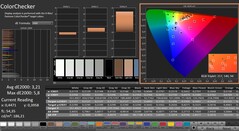









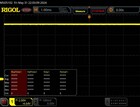






























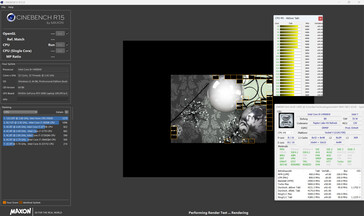
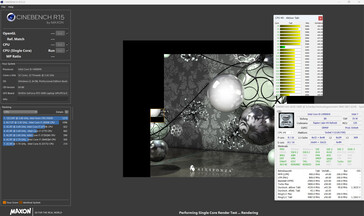




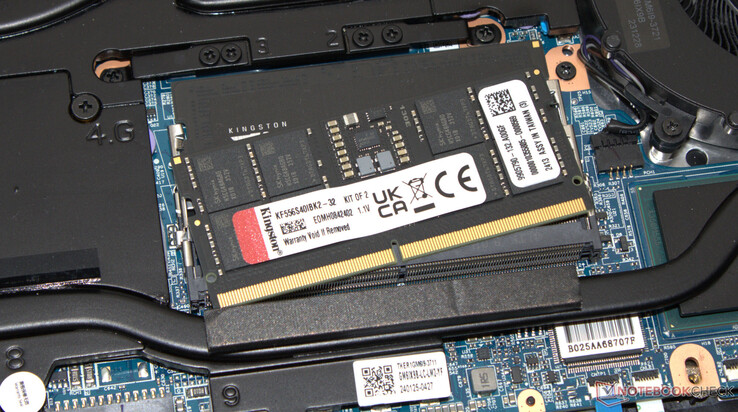
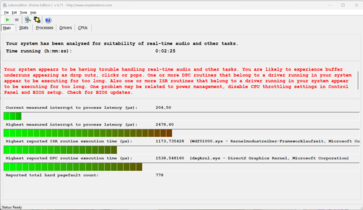


















 Total Sustainability Score:
Total Sustainability Score: 








